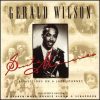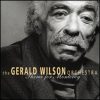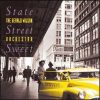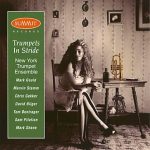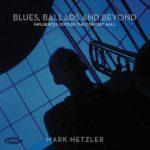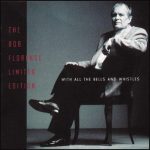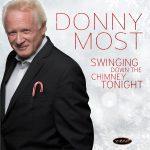Gerald Wilson
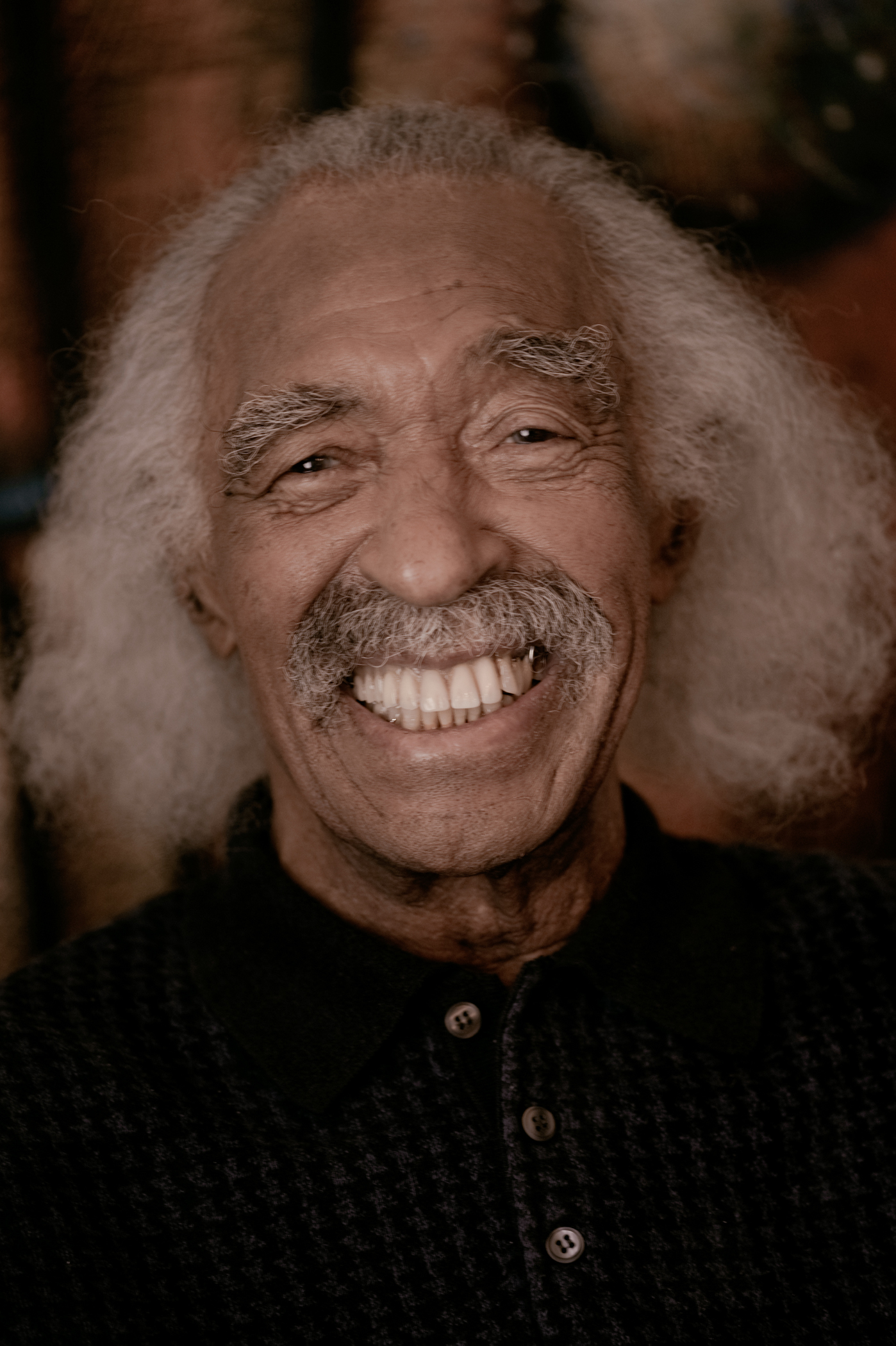
Biography
For more than fifty years, Gerald Wilson has been recognized as one of the premiere composers, arrangers and band leaders in modern jazz. Now in his 79th year, the elegant and gracious master continues not only to create brilliant, sophisticated music, but to reap ever greater honors for his timeless contributions to American culture. The perennially humble Wilson has garnered his share of accolades, including five Grammy nominations, top Big Band and Composer/Arranger honors in the Downbeat International Critics Poll, the Paul Robeson Award, the NEA American Jazz Masters Fellowship, and two 1997 American Jazz Awards for Best Arranger and Best Big Band. In 1996, Wilson received the rare honor of having his life’s work archived by the Library of Congress. As a composer and arranger, Wilson continues to produce prolifically. His latest CD from MAMA Records, the double Grammy-nominated Theme for Monterey (1999 Best Large Jazz Ensemble Performance; Best Original Composition: “Romance”), chronicles three recent works. The album’s namesake is a large-scale piece commissioned by the Monterey Jazz Festival last year, celebrating the Festival’s 40th anniversary. This set of five variations on a mesmerizing 40-bar theme, clocks in at nearly 45 minutes and is a testament to the composer’s sophistication and mastery. Wilson, who has enjoyed a special relationship with the world-renowned annual jazz event, also wrote and performed featured commissions for its 20th and 25th anniversary, as well as making several other appearances there during its 40-year history. The other pieces, his rendition of Gershwin’s “Summertime” and Parker/Gillespie’s “Anthropology” (based on Gershwin’s “I Got Rhythm” changes), both commissioned by the Ira and Leonore Gershwin Foundation, were premiered at the Library of Congress in 1996. “In my recent works,” stresses Wilson, “I’ve stayed away from some of the symphonic devices I’ve used elsewhere. I want this music to swing in any tempo, even the ballads. After all, this is jazz, and everything must swing!” Although not a household name, Wilson’s talent is legendary among jazz insiders. His groundbreaking compositions, intricate arrangements and immediately recognizable sound put him in a league of his own. In his prolific six-decade career as composer and arranger, Wilson has been behind some of the greatest names in jazz, including Duke Ellington, Count Basie, Ray Charles, Ella Fitzgerald, Benny Carter, Nancy Wilson, and Bobby Darin. Beyond his jazz accomplishments, Wilson’s symphonic compositions have been performed by the Los Angeles Philharmonic under the direction of Zubin Mehta. He even scored a top 40 pop hit with El Chicano’s 1970 version of his “Viva Tirado,” a song that has been recorded in at least 18 different versions, including a hip hop rendition by Latino rapper Kid Frost. Wilson began his life in jazz in 1937, when he joined the musician’s union and started playing professionally. Two years later, at the age of 21, he was invited to join the highly popular Jimmie Lunceford band in New York City. His impact was immediate, contributing such powerful material as “Hi Spook” and “Yard Dog Mazurka” to the Lunceford repertoire. After four years with Lunceford and a stint in the U.S. Navy during World War II, Wilson settled in Los Angeles, playing trumpet and writing for Benny Carter and Les Hite. In 1944 he organized the first Gerald Wilson Jazz Orchestra, featuring trombonist Melba Liston and trumpeter Snooky Young among its members. Twice touring the country, Wilson’s big band made its mark in New York City, receiving rave reviews playing the Apollo Theater between bookings of the Ellington and Lunceford bands, and in Chicago, landing a ten-week engagement at the Regal Theater and hiring a young Joe Williams as the band’s vocalist there. Just as his orchestra was reaching a peak of popularity and commercial success in 1947, Wilson dissolved the band. “All of a sudden I was in New York city with my band. I was very successful,” he remembers. “They were booking me everywhere and I had contracts all over the place, and I realized that, ‘Hey, this wasn’t what I wanted; there’s still so much I’ve got to learn.’ The only way I could was to actually stop and really study. My booking agent was ready to kill me.” Back in Los Angeles, Wilson devoted himself to refining his knowledge of harmony and orchestration. “It wasn’t that I dropped off the scene,” he says, “I was still playing and recording, but I was into that mode of studying.” Indeed, in 1948 he went on the road as a member of Count Basie’s big band, a learning experience itself in what Wilson calls “the cradle of swing.” In 1949, he joined his good friend and fellow trumpeter Dizzy Gillespie’s group. “He wouldn’t come to Los Angeles without coming to my home,” Wilson recalls of the bebop pioneer. In Dizzy’s band, Wilson helped shape the repertoire with such progressive arrangements as “Out of this World” and his own composition “Couldn’t Love, Couldn’t Cry,” which Wilson remembers as “a very advanced number; one of the works I’m most proud of writing.” From the late 1940s through the ’50s, Wilson was one of the most active arrangers and orchestrators in jazz and popular music. In addition to providing musical settings for Sarah Vaughan, Ray Charles, Julie London, Bobby Darin, Carmen McRae and many others, he developed a close working relationship with Duke Ellington. That “little association,” as Wilson calls it, lasted until Ellington’s death in 1974. Wilson also scored for motion pictures (Otto Preminger’s Anatomy of a Murder) and television (ABC’s variety program, The Redd Foxx Show, serving also as the show’s conductor and music director), achieving a balance of creative fulfillment and commercial success. As much as Wilson enjoyed his involvement in popular music, there was never any doubt about his first love. “I’m always looking to get something new going. Because jazz is a creative art form and if you start using the same rhythmic patterns and harmonies over again, you’re not creating. Fortunately,” Wilson explains, “I’ve never really had a problem getting my creative work heard; it always seemed something would open up for me.” He began his recording career in 1945 with the Excelsior and Black & White labels moving to Federal in the 1950s. Later he inaugurated a long, rewarding relationship with Pacific Jazz in 1961, which produced such critically acclaimed albums as You Better Believe It!, Moment of Truth, Portraits, On Stage and The Golden Sword. In 1969, pursuing his commitment to creative expansion, Wilson intensified his study of classical music, plunging into the scores of Stravinsky, Debussy, Katchaturian, Ravel, Villa Lobos, and Rodrigo. “I found a lot of things that have helped me so much with my jazz scoring,” he says. Already a master of complex voicings-his smooth uses of eight-part harmony and polytonality were always far ahead of their time-Wilson composed an extended work for the Los Angeles Philharmonic, titled “5/21/72,” performed under the direction of Zubin Mehta. This lead to further commissions in the classical form, including four arrangements for the Philharmonic and the Joel Westmorland 200-voice interdenominational choir. One of the most generous of artists, Wilson has continually sought ways to share his knowledge and passion, from hosting a daily jazz program on L.A.’s KBCA in the early 1970s to teaching jazz history for 13 years at California State University Northridge, six years at Cal State L.A., and for the past six years at UCLA. He is currently completing a book on jazz harmony. “It helps keep me alive,” he explains, “because jazz is such a chain of evolution. I just try to be a person worthy of being a part of this great art form.” In the 1990s, Wilson began recording with MAMA Records, while remaining at the forefront of big band jazz with as busy a schedule as ever. He calls State Street Sweet, his 1995 MAMA CD nominated for a Grammy as Best Large Ensemble Jazz Performance, “one of the best I’ve ever made.” His 1996 MAMA album, Suite Memories-Reflections on a Jazz Journey, is a chronicle of Wilson’s life in jazz. In a series of candid interviews, Wilson recalls his experiences starting from the heyday of jazz in the ’30s and ’40s to today. In recounting his associations with other jazz greats throughout the years, Wilson typically deflects credit and compliments to others as he quietly goes in search of yet another peak to scale. A tireless and creatively inexhaustible artist, Wilson rarely takes time to bask in the limelight that he shares with the other giants of jazz. Instead, with genuine humility, he says, “I’ve given to jazz the best that I have.” And, coming from Gerald Wilson, that will always be some of the best there is in modern jazz.



